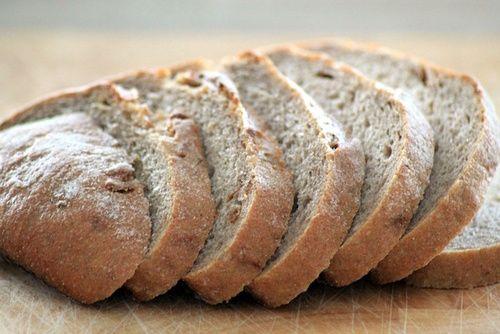Kamut bread it is a food very rich in nutrients beneficial for the body with high digestibility and assimilability. Let's find out better.
> 1. Properties and benefits of kamut bread
> 2. Calories and nutritional values
> 3. Production of kamut bread
> 4. Kamut bread recipe

Properties and benefits of kamut bread
Kamut bread it has the typical properties of the flour with which it is produced. Kamut flour can provide a superior energy and nutritional intake to what can be provided by flours derived from various types of wheat.
And minerals present are: calcium, iron, magnesium, phosphorus, potassium, copper, zinc, sodium, manganese and selenium. Vitamins instead present are: vitamin A, vitamins B1, B2, B3, B5, B6, vitamin E, present in quantities equal to 30% more than common wheat, vitamins K and J.
Sugars they are divided into maltose, sucrose, dextrose and fructose. There is a rather high concentration of fundamental amino acids: aspartic and glutamic acid, alanine, arginine, cystine, glycine, phenylalanine, histidine, isoleucine, leucine, lysine, proline, methionine, serine, tyrosine, tryptophan, threonine and valine.
In addition to its nutritional properties, its is much appreciated good digestibility and assimilability. To underline the presence of selenium, which, thanks to its antioxidant properties, is able to protect the body from the effects of free radicals.
Kamut bread is not suitable for celiac sufferers as it contains gluten.
Calories and nutritional values
Kamut bread provides 359 Kcal per 100 g of product. Nutritionally, kamut bread is richer in minerals such as magnesium, zinc and selenium. The higher amount of protein is also a distinctive element compared to other cereals.
Properties and use of kamut flour
Production of kamut bread
Kamut bread is made from kamut flour, which is the product of the grinding of Triticum turgidum turanicum wheat, or an oriental wheat (Egypt, ancient Mesopotamia) belonging to the Graminaceae family, also known as red wheat or khorasan.
The name derives from ka'moet which, in the Egyptian language means "soul of the earth". Kamut is a registered trademark owned by the American company Kamut, founded in Montana by Bob Quinn, doctor of plant pathology and organic farmer.
The name designates, from a commercial point of view, the cultivar called Khorasan. Production and sale of this cultivate with the commercial name of Kamut is strictly regulated and must take place in a certified organic way and comply with a series of rules.
Bread with kamut flour is very popular because it has a particular taste, sweet and aromatic at the same time.
Kamut bread recipe
Ingredients
- 300 g of kamut flour
- 270 g of 0 wheat flour
- 5 g of fine salt
- 25 g of yeast
- 300 ml of warm water
Method
Mix the two flours together and add the yeast, salt and warm water a little at a time.
Knead the dough until you get a soft and compact dough. Leave the dough to rise for about 2 hours covered with a cloth. After the rising time, form loaves that will be baked in the oven at 180 ° C for half an hour.
Read also
> How to make kamut pizza
> Kamut flour, 3 recipes


























